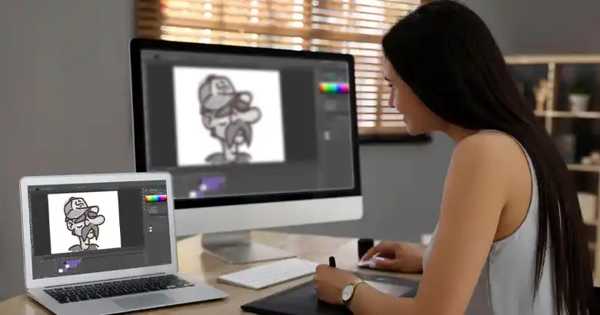How To Prepare For A Virtual Job Interview: Tools And Tips That Work
Is your following big job interview happening over a screen instead of across a table? Welcome to the digital hiring era. Virtual interviews are here to stay—whether it's a Zoom call with a recruiter halfway across the country or a structured panel through Microsoft Teams. But just because you're not stepping into a conference room doesn't mean you can show up in pyjama pants and wing it.
So, how do you present yourself as polished, confident, and well-prepared when you're talking to your screen? What tools do you need? And what details do hiring managers silently judge while you're answering questions?
Let's unpack everything—from setup to mindset—to help you walk into your following virtual interview ready for anything.
Setting The Stage: Your Space Matters More Than You Think
You’d be surprised how much your environment influences the way you’re perceived on screen. Interviewers don’t just see your face—they see your background, lighting, and how “together” your setup looks.
Start with your camera angle. You want your webcam at eye level, not pointing up your nose or down at your keyboard. Use a stack of books if you don't have a tripod. Ensure your face is well-lit by placing a light source behind your screen, not behind your head.
Then there's the background. A plain wall works best. If you can't avoid a cluttered space, consider blurring your background or using a subtle virtual one. Avoid anything flashy, animated, or beach-themed (unless you're applying to run a social for a surf brand).
And don't forget the noise. Let your housemates know. Mute notifications. Close windows if there's street sound. Interviewing from a coffee shop? It's probably not your best bet unless it's the only option and you've got strong noise-cancelling headphones.
Must-Have Tools That Give You The Edge
You don’t need a Hollywood studio, but you do need more than just your laptop mic and good intentions. Here’s what can make or break your virtual presence:
Headphones with a mic

Even a basic pair of wired earbuds with a built-in mic can dramatically improve sound quality. It helps avoid echo and makes your voice clearer—essential in group calls, where clarity is key.
Stable Internet
A dropped call mid-sentence is more than awkward. Test your Wi-Fi before the interview. Better yet, plug directly into your router using an Ethernet cable if you can. If your connection is shaky, use your phone as a hotspot as backup.
Video Conferencing App (Updated and Ready)
Whether it’s Zoom, Google Meet, Microsoft Teams, or Skype—download the app in advance. Log in the night before, test the audio and video, and verify your display name. You don't want to be "John's iPad” when you’re applying for a senior analyst role.
Digital Notes (Smartly Used)
Sticky notes on your screen or a neatly arranged document on the side of your screen can help you stay on track. Just avoid reading from a script that's written. Interviewers will notice.
A Calendar Reminder + Backup Link
Always have the interview time saved in your calendar with the correct time zone. Save the interview link in two places. Set a 30-minute alert beforehand so you can prep without scrambling.
Mindset & Body Language: The Silent Influencers
Just because you’re not in the same room doesn’t mean body language disappears. It becomes even more noticeable.
Look at the camera—not your image.
This mimics real eye contact. You don't have to stare unblinking, but make it a habit to look into the lens, especially when delivering essential points.
Sit up. Smile naturally. Nod occasionally

It sounds simple, but these subtle movements show you're engaged. Slouching or staring blankly, even out of nervousness, can come off as disinterest.
Practice your pacing
Internet lag can cause delays. Speak a little slower than usual and pause before answering to avoid talking over your interviewer.
Confidence shows through the voice.
Record yourself answering a few common questions. Do you sound too soft? Too rushed? Monotone? Use this as an opportunity to refine your tone and clarity before the actual event.
Prep Like a Pro: What To Review Before The Call
Even with a perfect setup and tools in place, content is king. Here’s what to focus on the day before:
Research the company again
Not just their About page—look at recent news, LinkedIn updates, or product launches. Reference these in conversation to show you’re paying attention.
Revisit the job description.
Highlight keywords and skills they’re emphasizing. Prep examples from your past work that align with what they’re looking for.
Write your personal “elevator pitch.”
That “tell me about yourself” opener still happens virtually. Keep it to 60–90 seconds, focus on your strengths, and make sure it flows naturally.
Prepare your questions.
Ask about team culture, remote work structure, or what success looks like in the role. Avoid questions that Google could answer.
Mock interviews help
Record a mock interview or ask a friend to practice with you. It helps settle nerves and uncovers things you might not notice—like speaking too fast or using too many filler words.
Wrapping It Up Right: Follow-Up Etiquette
Once the interview ends, don’t log off and forget about it. Follow up with a short, thoughtful thank-you email. Mention one or two things you appreciated about the conversation. Keep it human, not robotic.
For example:
"Thanks again for the great conversation today. I especially enjoyed hearing about your team's recent project on [X]. It sounds like a space where I could contribute meaningfully and continue to grow."
Avoid generic phrases like "Thank you for your time." Be specific. It shows genuine interest.
Make Your Virtual Interview Work For You
Virtual interviews aren’t just a substitute for in-person meetings—they’re a new kind of first impression. Done right, they can work in your favour. You control the environment, setup, and preparation more than ever before.
So, test your tools. Curate your space. Practice with intention. And when the screen lights up and the interviewer says hello, you’ll be ready to greet them with clarity, confidence, and professionalism.
After all, just because it’s virtual doesn’t mean it’s not real. Treat it like the opportunity it is—and let them see exactly why you’re the right person for the job.





